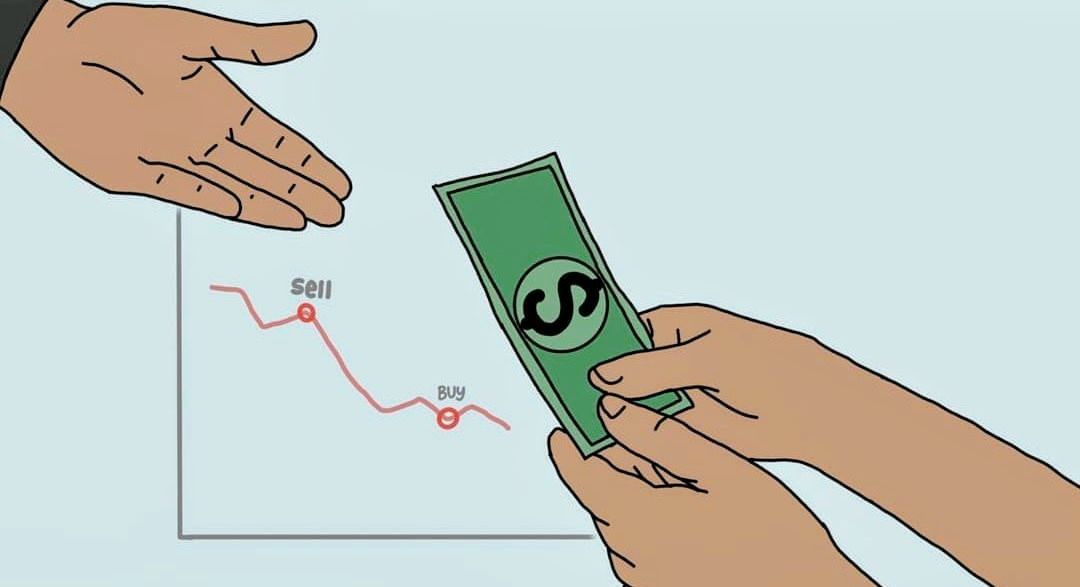
An atypical yet rewarding investment strategy, short selling is alluring to those with a high-risk appetite. A tactic generally reserved for expert traders, short selling is the opposite of traditional trading, wherein you buy low and sell high. Running this route of traditional trading is called going long. When you short a stock, you bet against a company. You stand togainwhen the market value of the shares of that company falls. Further explained below, this blog will cover what short selling is and how it is used to gain profits, short selling as a hedge, pros, cons, and what you should know about it.
What it means:
Short selling is when you sell the shares of a company under the calculated assumption that their market value will drop and you can repurchase them at a lesser price. Think of it like this: imagine you borrow a pair of shoes from a store 'X' and sell those shoes to a friend, Dave, at $50. You now have $50 in your pocket from the sale of those shoes. Now, something goes wrong, and store 'X' is facing significant financial problems causing the price of those shoes to fall from $50 to $25. You now repurchase those shoes at a cheaper price, in this case, $25. Essentially, you have now made a profit of $25 [$50 (selling price) - $25 (current cost price)]. You now have both, the shoes and the $25 profit in your hands, enabling you to return the borrowed shoes to store 'X'. This concept of estimating the fall of store 'X' followed by calculated selling and repurchasing of shoes, is called short selling. Running this course of investment is termed as 'going short'.
Recognizing this financially, the short seller borrows shares of a company from their broker, sells it in the market at its current market value. They, then, repurchase it at a lesser price, return the borrowed shares to the broker along with the broker's commission, and keeps the difference as their net profit gained.
Short Selling as a Hedge:
A hedge is an investment to reduce the risk of adverse price movements in an asset. Simply put, hedging is like taking out an insurance policy. If you live in a storm-prone area, you will want to buy storm insurance to protect your house. Here, preventing the storm is unlikely, but you can plan ahead of time and minimize its adverse effects on your home - by taking out storm insurance.
Here is where short selling features: Short selling as a hedge is regarded as the lower-risk avatar of shorting. The motive behind using short selling here is protection and not seeking profits. Hedging is tried to protect gains and minimize losses.
Pros:
Short selling is based entirely on calculated speculation. If done properly and your guess turns out to be correct, you will stand to make a profit. Given below are some pros of short selling:
- The initial capital required is little.
- It can be used as a hedge.
- There is a possibility of high profits.
- Going short opens up a selling position.
- Shorting allows traders to gain profits even if the market is going down.
- Leverage can be employed and positions larger than your capital can be opened.
Cons:
Short selling is a high-risk investment strategy. Going long comprises potentially infinite profits and capped losses. This is because the market value of a company's shares can increase to infinity (in theory), whereas the losses are limited. Going short, on the other hand, comprises potentially infinite losses with limited profits. What this means is a trader who has bought stock can only lose 100% of their outlay if the stock moves to zero. However, a trader who has shorted their stock can lose a lot more than 100% of their original investment.
- Holding a margin account is necessary for short selling
- Until you repurchase the shares, you are paying interest for borrowing them in the interim period
- If your calculated guess is incorrect, you could suffer significant losses
- It might take much longer for a stock price to decline. Meanwhile, you will still be vulnerable to margin calls and interest and could be called away.
Three Things You Should Know About Short Selling:
- Short selling usually happens when there is a bearish trend in the stock market and investors expect the prices of shares to drop.
- Before shorting a stock, ask yourself if the company can be taken over. If the answer is yes, avoid shorting that stock.
- Avoid being part of a gang tackle. If you hear too many investors shorting the stocks that you are, that is usually bad news. They might abandon their shorts if things get rough and drive the price higher. There is too much to lose if you short the wrong stock.
In conclusion, short selling is no exception to the phrase 'high-risk, high reward'. This strategy is all about selling high and buying low. Calculated speculations coupled with thorough research can take you a long way. That being said, stocks tend to go up a lot more than they go down. It is advisable to consult with your financial advisor before deciding on shorting a stock. All in all, short selling comes with its own risks and is reserved for those who bear a high-risk appetite.
After having successfully covered what short selling is, its pros and cons, short selling as a hedge, and three things you should keep in mind, it is worthwhile to remember that short-selling can be highly rewarding if done right.
